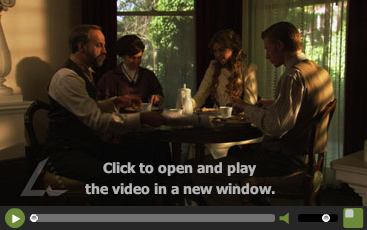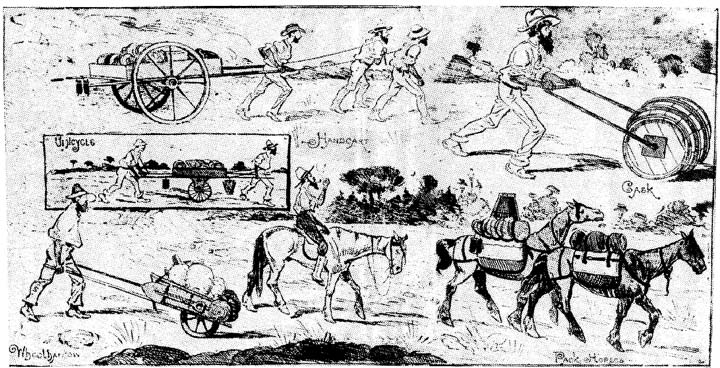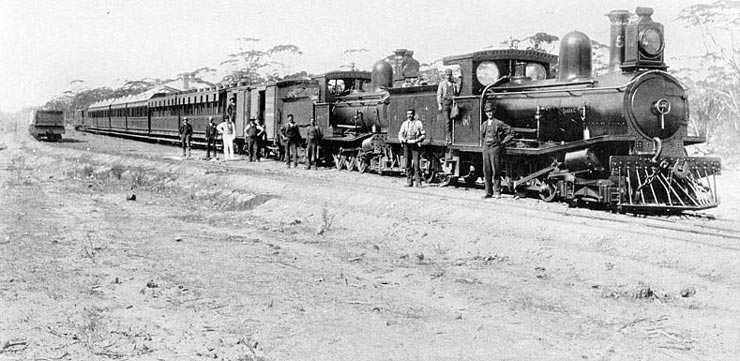Activity 3: Boomtime in Western Australia
WebQuest challenge
Now that you have experienced Look to Learn and Knowledge Building on what were the experiences of the Chinese in Australia during the Australian gold rushes, you are ready to try a Challenge. This WebQuest challenges you to take your insights and knowledge of the early gold rushes that took place in Australia during the 1800s with what can be seen as "Today's Gold Rush" for wealth in a different kind of mining.
Access to Scootle digital content
Digital content has been incorporated into these learning sequences to support student learning.
A link is provided to open each of these Scootle digital resources
You need to login to Scootle to access the digital content in these learning sequences.
For this Challenge you will explore the past, consider the present and then make a decision on which migration you would pursue should you have the opportunity.
- The Past – Gold rush in Western Australia
- The Present – Mining boom in Western Australia and Internal migration in China
- The Challenge – Compare and choose
1. The past
In the 1890s, gold was discovered in Western Australia.
Open this link to watch a Scootle video resource for background on the discovery and its impact.

"Pipe Dreams" Episode from Constructing Australia.
The Coolgardie gold fields were approximately 600 km east of Perth and as the railway line did not reach there until 1896, thousands of hopeful gold prospectors used various means, including those shown in the sketch, to travel a route that was little more than a track in the earliest days of WA's greatest gold rush. Opening this link will show you a Scootle digital image that shows the different means of transport used by prospectors to get to Coolgardie.

TLD ID R6597 - The rush to Coolgardie, 1894 + details and a photograph showing Swampers on the road, 1890s - TLD ID R4923 plus background details.
Boom times in Western Australia
On 24 August 1893, less than a year after Arthur Bayley and William Ford's discovery of gold at Fly Flat, Coolgardie was declared a town site, with a population of 4,000. The gold rush transformed the WA economy as gold production soared from 22,806 ounces in 1890 to 1,643,876 ounces in 1900 and this was matched by the fourfold increase in WA's population from 46,290 in 1890 to 184,124 reported in the 1901 census.

TLD ID R5503–First train to Coolgardie, 1896 plus details
Open this link to a Scootle digital resource that will help you understand the following text.
On 23 March 1896, the train line was completed between Perth / Southern Cross to Coolgardie. The opening of the extension was a cause for much celebration and was described as heralding a 'new era in the history of Western Australia'. WA's Governor, Sir Gerard Smith, told the 10,000-strong crowd that the opening was an event of worldwide importance and that the news would be telegraphed to every capital of every great nation. From the details for TLD ID R5503)
Additional information
2. The present
Western Australia is in the midst of a different kind of "gold rush."
A video from Al Jazeera gives an overview of how China's demand for Australian minerals have spurred a new Australian mining boom.
If you prefer to read about this in Iron ore monthly indexes, the graph and text provide background and show the dramatic increase in the price for iron ore since China began its massive nation building projects.
Such increases have lead to a "Boom" in mining in Western Australia. A quote from the CIA World Factbook provides some background on what's happening:
Australia's abundant and diverse natural resources attract high levels of foreign investment and include extensive reserves of coal, iron ore, copper, gold, natural gas, uranium, and renewable energy sources. Continued demand for commodities, especially from China, helped the Australian economy rebound after just one quarter of negative growth.
According to the Wikipedia entry on "Iron ore mining in Western Australia"
Iron ore in Western Australia experienced unprecedented growth in 2008-09, with the state's output growing by 8.5 percent, to 316 million tonnes of ore. In terms of value, the industry grew by 53 percent. The bulk of Western Australian ore went to China, which imported 64 percent of the 2008-09 production, or A$21 billion in value.
In the article "The Economy of Australia", the section on Chinese investment states:
There is substantial export to China of iron ore, wool, and other raw materials and over 120,000 Chinese students study in Australian schools and universities. China is the largest purchaser of Australian debt. In 2009, offers were made by state-owned Chinese companies to invest 22 billion dollars in Australia's resource extraction industry.
The passage above was supported by an article from The New York Times: Australia, Nourishing China's Economic Engine, Questions Ties.
3. The present – mining boom in Western Australia
Just like the earlier era when people from around the world travelled to Western Australia in search of gold, many Australian workers are now chasing high-paying jobs in the WA mines. Because of the remote locations of the mines, many workers FIFO, or fly-in, fly-out.
History and resources on FIFO in Western Australia
Town's perspective
Workers' perspective
Company's focus on fly-in, fly-out
Additional resources to explore
4. The present – internal migration in eastern China
Eastern China is in the midst of a different kind of "gold rush." People from the rural areas and farms are migrating to the new urban cities so they can improve their lives. View the videos in bold below.
Additional resources
5. The challenge – compare and choose
You should now see that "Gold Rushes" are not only something from the past and centred in gold fields. "Booms" and "rushes" have happened throughout history and across the globe. You saw that two are happening right now in Western Australia and Eastern China. These migrations are affecting real people, their lives and families.
So that you can get a deeper understanding of such modern "rushes for gold," you are challenged to:
- compare and choose which of the migrations you would pursue
- complete a venn diagram from the resources listed below
- write a report on which "rush for gold" you would most like to be part of
- provide evidence to justify your decision.
Technology integration – thinking tools
Use one of the sites below to create a Venn diagram to assist you in comparing past and present gold rushes.
The Exploratree version has the most help features and once you register, you can use many other graphic organisers.
Venn diagram tools
6. Conclusion
There is a common saying that "history repeats itself". This Challenge has provided you with the oppportunity to explore the similarities and differences of the gold rushes of the 1800s and 21st Century. We hope that you now see that such migrations that occurred during the late 1800s in Australia are an important part of history, but that the human motivation to find a better life is alive in people today, all over the world.